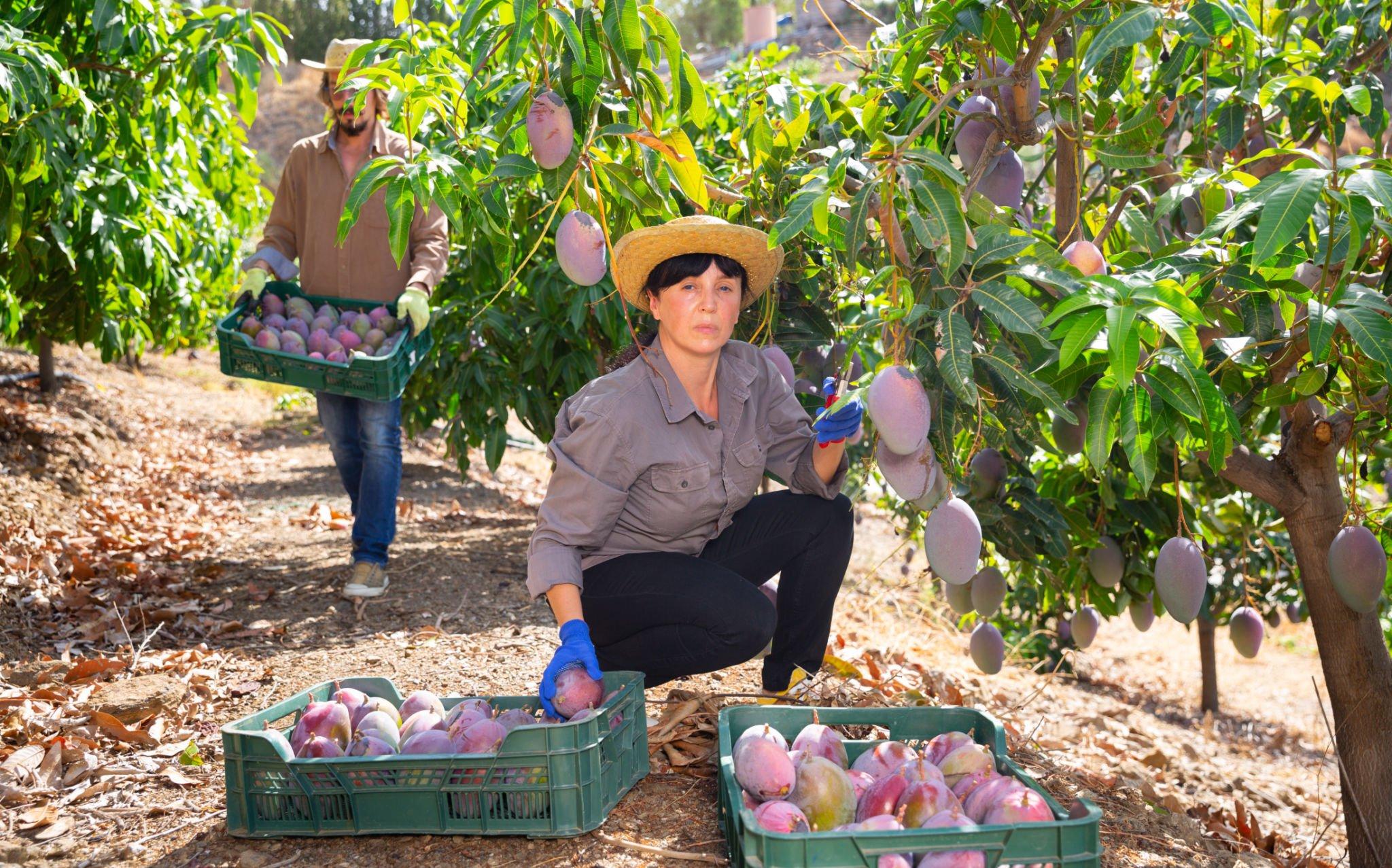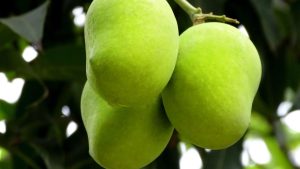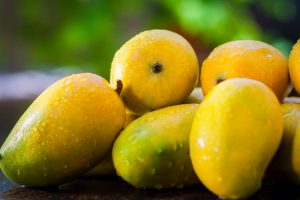
“Streamline your mango exports to Australia with our comprehensive guide.”
Introduction
This guide is designed to assist mango farmers and exporters in navigating the export process to Australia. It provides a comprehensive overview of the requirements and regulations that must be met in order to successfully export mangoes to Australia. The guide covers topics such as market access requirements, packaging and labeling requirements, and documentation requirements. By following the guidelines outlined in this guide, mango farmers and exporters can ensure that their products meet the necessary standards and are able to enter the Australian market.
Understanding the Australian Market: A Key to Successful Mango Export
Exporting mangoes to Australia can be a lucrative business for farmers and exporters. However, navigating the export process can be challenging, especially for those who are new to the industry. One of the keys to successful mango export is understanding the Australian market.
Australia is a significant market for mangoes, with a growing demand for high-quality produce. The country’s tropical climate makes it an ideal location for growing mangoes, but the local production is not enough to meet the demand. As a result, Australia imports mangoes from other countries, including India, Pakistan, and the Philippines.
To export mangoes to Australia, it is essential to understand the market’s requirements and regulations. The Australian government has strict regulations on the importation of fresh produce to protect the country’s biosecurity. Mangoes must meet specific standards to be allowed into the country.
One of the critical requirements for mango export to Australia is compliance with the Australian Quarantine and Inspection Service (AQIS) regulations. AQIS is responsible for inspecting and certifying all imported fresh produce to ensure it meets the country’s biosecurity standards. Mangoes must be free from pests and diseases and meet specific quality standards.
To comply with AQIS regulations, mangoes must be grown and packed according to specific guidelines. The fruit must be harvested at the right maturity level, free from blemishes and bruises, and packed in clean, hygienic conditions. The packaging must also meet specific requirements, including labeling and traceability.
Another critical factor in successful mango export to Australia is understanding the market’s preferences. Australian consumers prefer mangoes that are sweet, juicy, and have a good aroma. The most popular varieties in Australia are Kensington Pride, R2E2, and Honey Gold. These varieties are known for their excellent flavor and texture and are in high demand in the Australian market.
To meet the market’s preferences, mango farmers and exporters must ensure that the fruit is of high quality and meets the required standards. This includes selecting the right variety, harvesting at the right time, and packing and transporting the fruit under the right conditions.
In addition to complying with regulations and meeting market preferences, mango farmers and exporters must also consider the logistics of exporting to Australia. Exporting fresh produce requires careful planning and coordination to ensure that the fruit arrives at its destination in good condition.
One of the critical factors in successful mango export logistics is temperature control. Mangoes are a perishable commodity and must be transported under the right temperature conditions to maintain their quality. The fruit must be kept at a temperature of between 10 and 13 degrees Celsius during transportation to ensure that it arrives at its destination in good condition.
Another critical factor in successful mango export logistics is packaging. Mangoes must be packed in sturdy, ventilated containers that allow for air circulation and prevent damage during transportation. The packaging must also be labeled correctly, including the country of origin, variety, and other relevant information.
In conclusion, understanding the Australian market is a key factor in successful mango export. Mango farmers and exporters must comply with AQIS regulations, meet market preferences, and consider logistics to ensure that the fruit arrives at its destination in good condition. With careful planning and attention to detail, exporting mangoes to Australia can be a profitable business for farmers and exporters.
Compliance with Australian Import Regulations: A Step-by-Step Guide
Exporting mangoes to Australia can be a lucrative business for farmers and exporters. However, it is important to comply with Australian import regulations to avoid any legal issues and ensure the safety of the produce. In this article, we will provide a step-by-step guide on how to navigate the export process and comply with Australian import regulations.
Step 1: Obtain a Phytosanitary Certificate
A Phytosanitary Certificate is a document that certifies that the mangoes have been inspected and are free from pests and diseases. This certificate is issued by the National Plant Protection Organization (NPPO) of the exporting country. In Australia, the Department of Agriculture, Water and the Environment (DAWE) is responsible for issuing import permits and inspecting imported goods.
Step 2: Apply for an Import Permit
Before exporting mangoes to Australia, an import permit must be obtained from DAWE. The application process can be done online, and the permit will specify the conditions that must be met for the mangoes to be imported. These conditions may include treatment requirements, packaging and labeling requirements, and inspection requirements.
Step 3: Meet Treatment Requirements
Mangoes exported to Australia must undergo a treatment process to ensure that they are free from pests and diseases. The treatment process may vary depending on the exporting country and the type of pest or disease that is present. The treatment must be carried out by an approved treatment provider and must be done within a specified timeframe before the mangoes are exported.
Step 4: Packaging and Labeling Requirements
Mangoes must be packaged and labeled in accordance with Australian import regulations. The packaging must be clean and free from any contaminants, and the labeling must include information such as the name and address of the exporter, the country of origin, and the treatment applied.
Step 5: Inspection Requirements
Mangoes imported into Australia must undergo inspection by DAWE to ensure that they meet the import conditions specified in the import permit. The inspection may be carried out at the port of entry or at an approved inspection facility. If the mangoes do not meet the import conditions, they may be refused entry into Australia or may be subject to further treatment or disposal.
In conclusion, exporting mangoes to Australia can be a profitable venture for farmers and exporters. However, it is important to comply with Australian import regulations to avoid any legal issues and ensure the safety of the produce. By following the steps outlined in this guide, farmers and exporters can navigate the export process and successfully export mangoes to Australia.
Finding Reliable Export Partners: Tips and Strategies
Exporting mangoes to Australia can be a lucrative business for farmers and exporters. However, navigating the export process can be challenging, especially for those who are new to the industry. One of the most critical aspects of exporting is finding reliable export partners. In this article, we will provide tips and strategies for mango farmers and exporters to find trustworthy partners to help them navigate the export process.
The first step in finding reliable export partners is to conduct thorough research. This involves identifying potential partners and conducting background checks to ensure that they have a good reputation in the industry. One way to do this is to attend trade shows and conferences where you can meet potential partners and learn more about their business practices. You can also use online resources such as industry directories and trade associations to find potential partners.
Once you have identified potential partners, it is essential to conduct due diligence to ensure that they are reliable and trustworthy. This involves checking their credentials, such as their licenses and certifications, and verifying their references. You should also check their financial stability to ensure that they have the resources to fulfill their obligations.
Another important factor to consider when choosing export partners is their experience in the industry. It is essential to work with partners who have a proven track record of success in exporting mangoes to Australia. This will ensure that they have the necessary knowledge and expertise to navigate the complex export process and comply with all the relevant regulations.
Communication is also critical when working with export partners. It is essential to establish clear lines of communication and ensure that you are on the same page regarding expectations and timelines. This will help to avoid misunderstandings and ensure that the export process runs smoothly.
In addition to finding reliable export partners, it is also essential to have a solid understanding of the export process. This includes understanding the regulations and requirements for exporting mangoes to Australia, such as phytosanitary requirements and labeling requirements. It is also important to have a clear understanding of the logistics involved in exporting, such as shipping and handling procedures.
Working with a reputable freight forwarder can also be beneficial when exporting mangoes to Australia. A freight forwarder can help to coordinate the logistics of the export process, including arranging for transportation, handling customs clearance, and ensuring that all necessary documentation is in order.
In conclusion, finding reliable export partners is essential for mango farmers and exporters who want to export their products to Australia. Conducting thorough research, verifying credentials, and checking references are all critical steps in finding trustworthy partners. It is also important to work with partners who have experience in the industry, establish clear lines of communication, and have a solid understanding of the export process. By following these tips and strategies, mango farmers and exporters can navigate the export process successfully and take advantage of the lucrative opportunities available in the Australian market.
Packaging and Labeling Requirements for Mango Export to Australia
Mango farming is a lucrative business in many parts of the world, and Australia is one of the countries that import mangoes from other countries. If you are a mango farmer or exporter looking to export your produce to Australia, it is important to understand the packaging and labeling requirements for mango export to Australia.
Packaging Requirements
The packaging of mangoes for export to Australia must meet certain requirements to ensure that the fruit arrives in good condition. The packaging must be clean, dry, and free from any contaminants. The packaging must also be strong enough to withstand the rigors of transportation.
Mangoes must be packed in a way that prevents damage during transportation. The fruit must be packed in a way that prevents bruising, crushing, or any other damage that may affect the quality of the fruit. The packaging must also be able to maintain the temperature and humidity levels required for the fruit to remain fresh.
The packaging must be labeled with the name and address of the exporter, the name and address of the importer, the country of origin, the variety of mango, the net weight, and the date of packing. The labeling must be clear and legible.
Labeling Requirements
The labeling of mangoes for export to Australia must meet certain requirements to ensure that the fruit is safe for consumption. The labeling must include information about the fruit’s origin, variety, and quality.
The labeling must also include information about any treatments that the fruit has undergone. Mangoes that have been treated with chemicals must be labeled with the name of the chemical, the date of treatment, and the duration of the treatment. The labeling must also include any other information required by Australian law.
The labeling must be in English and must be clear and legible. The font size must be large enough to be easily read. The labeling must be placed in a prominent position on the packaging.
Conclusion
Exporting mangoes to Australia can be a profitable venture for mango farmers and exporters. However, it is important to understand the packaging and labeling requirements for mango export to Australia. The packaging must be clean, dry, and strong enough to withstand transportation. The labeling must include information about the fruit’s origin, variety, and quality, as well as any treatments that the fruit has undergone. By meeting these requirements, mango farmers and exporters can ensure that their produce arrives in good condition and is safe for consumption.
Managing Logistics and Transportation: Challenges and Solutions
Exporting mangoes to Australia can be a lucrative business for farmers and exporters. However, navigating the export process can be challenging, especially when it comes to managing logistics and transportation. In this article, we will discuss the challenges and solutions for managing logistics and transportation when exporting mangoes to Australia.
One of the biggest challenges in managing logistics and transportation is ensuring that the mangoes are transported in the right conditions. Mangoes are a delicate fruit that requires careful handling to ensure that they arrive at their destination in good condition. This means that the mangoes need to be transported in a temperature-controlled environment to prevent spoilage.
To overcome this challenge, it is important to work with a reputable logistics company that has experience in transporting perishable goods. The logistics company should have the necessary equipment and expertise to ensure that the mangoes are transported in the right conditions. It is also important to ensure that the mangoes are packed properly to prevent damage during transportation.
Another challenge in managing logistics and transportation is dealing with customs and quarantine regulations. Australia has strict regulations when it comes to importing agricultural products, including mangoes. This means that exporters need to comply with these regulations to ensure that their mangoes are allowed into the country.
To overcome this challenge, it is important to work with a customs broker who has experience in dealing with agricultural imports. The customs broker can help exporters navigate the complex regulations and ensure that their mangoes meet the necessary requirements. It is also important to ensure that the mangoes are properly labeled and packaged to comply with the regulations.
Transportation costs can also be a challenge when exporting mangoes to Australia. Shipping costs can be high, especially if the mangoes are being transported by air. This can eat into the profits of the exporter, making it difficult to compete in the market.
To overcome this challenge, it is important to work with a logistics company that can provide cost-effective transportation solutions. This may involve using a combination of transportation modes, such as sea and air, to reduce costs. It is also important to negotiate with the logistics company to get the best possible rates.
Finally, communication is key when it comes to managing logistics and transportation. Exporters need to be in constant communication with their logistics company to ensure that everything is running smoothly. This includes providing regular updates on the status of the mangoes and any issues that may arise during transportation.
To overcome this challenge, it is important to work with a logistics company that has good communication channels in place. This may involve using online tracking systems or regular phone and email updates. It is also important to establish clear lines of communication and expectations from the outset.
In conclusion, managing logistics and transportation when exporting mangoes to Australia can be challenging, but it is not impossible. By working with a reputable logistics company, complying with regulations, negotiating costs, and maintaining good communication, exporters can overcome these challenges and succeed in the market. With the right approach, exporting mangoes to Australia can be a profitable business for farmers and exporters.
Conclusion
Conclusion: Navigating the Export Process: A Guide for Mango Farmers and Exporters to Australia is a comprehensive guide that provides valuable information and step-by-step instructions for mango farmers and exporters who want to export their products to Australia. The guide covers various aspects of the export process, including market research, legal requirements, packaging, labeling, and transportation. By following the guidelines provided in this guide, mango farmers and exporters can ensure that their products meet the Australian standards and regulations, and they can successfully enter the Australian market. Overall, this guide is an essential resource for anyone who wants to export mangoes to Australia.




